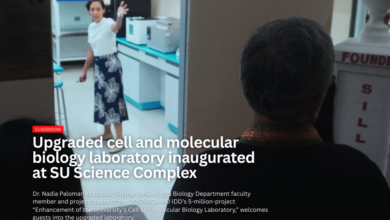Innovative Light-Driven Nanoparticle Cancer Therapy Developed by Professor Dong Ha Kim

Professor Dong Ha Kim from the Department of Chemistry & Nanoscience at Ewha Womans University has developed a novel cancer therapy that employs optically tunable catalytic techniques using enzyme-like chiral plasmonic nanoparticles (CPNs). This research, detailed in the online edition of *Nature Communications* on March 15, introduces a method aimed at effectively eliminating cancer cells by adjusting the catalytic activity of the nanoparticles with circularly polarized light (CPL).
Research Background
The human body carries out intricate biochemical reactions, such as metabolism and gene regulation, which must occur in a specific order and under particular conditions for optimal functioning. The research team focused on mimicking these cascade reactions to produce a cancer treatment involving chiral nanoparticles.
Methodology and Findings
The study involved the design of biomimetic chiral plasmonic nanoparticles that exhibit glucose oxidase and peroxidase-like activities, allowing for independent regulation of each reaction through exposure to CPL. Findings from cell studies and animal models indicated that exposure to sequential CPL irradiation resulted in increased radical generation and improved cancer treatment outcomes compared to traditional methods, highlighting the potential of this technology.
Addressing Limitations in Cancer Therapy
This research addresses existing limitations in catalytic cancer therapies by incorporating chirality into nanoparticles, which enables them to mimic the natural selectivity of biological systems while integrating an optically tunable mechanism. This strategy not only opens new possibilities for targeted drug delivery and regenerative medicine but is also expected to influence advancements in nanotechnology within the medical field.
Future Research Directions
Future research will focus on evaluating the applicability of this system across various cancer types, validating its effectiveness through clinical trials, and improving its biocompatibility. There are anticipations that this innovative optical cancer therapy may be applicable in clinical settings.
Collaborative Efforts
The study, titled “Optically tunable catalytic cancer therapy using enzyme-like chiral plasmonic nanoparticles,” was conducted in collaboration with Distinguished Visiting Professor Luke P. Lee, an expert in bioengineering at Ewha, along with a team from Seoul National University and the Korea Institute of Science and Technology.
(Source: Ewha Womans University)




